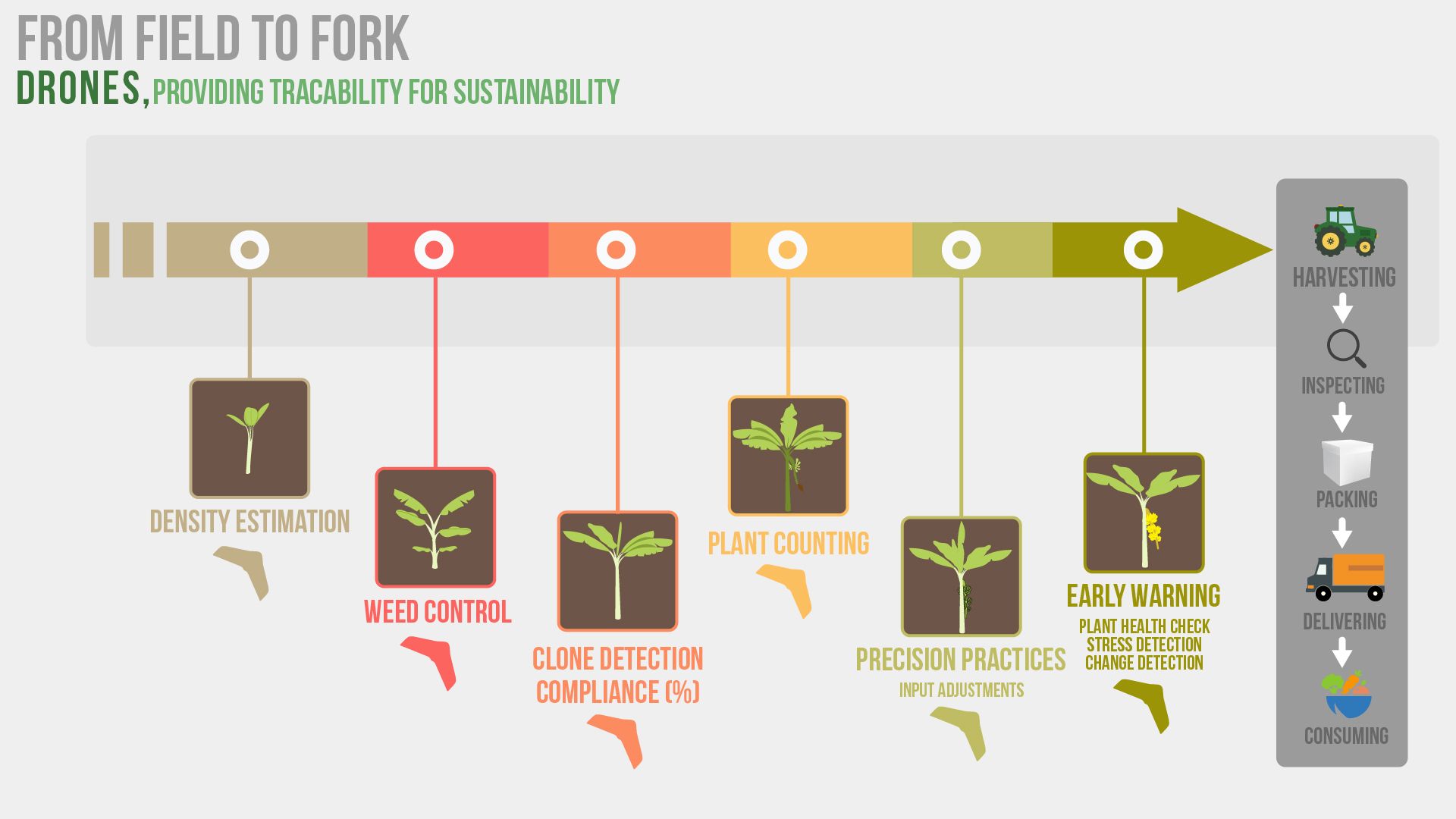Supply chain transparency and meeting sustainability standards are critical – here’s how today’s drone technology can deliver the traceability you need.

Supply chain transparency is more important to consumers today than ever before. Knowing where a product has come from and proof that it adheres to sustainable standards are two of the most vital pieces of information that consumers demand.
Investors in agribusiness technology understand that it is a crucial element of their business too. A recent Boston Consulting Group survey of senior leaders at some of the world’s largest agribusiness companies found their top two priorities were big data and analytics, and food security and traceability.
Transparency from plant to fork
Today, many agribusiness companies are using UAV technology to meet sustainability and traceability standards as accurately, efficiently and cost-effectively as possible.
“From plant to fork, drone technology can leverage sustainable practises and manage the supply chain risk, thanks to their third eye in the sky,” says Lenaic Grignard, Agriculture and Forestry Product Manager at Delair. “This is due to their precise measure of production practices and plant health monitoring.”A professional UAV like Delair’s DT18 AG – which can fly for up to two hours – will facilitate a fast assessment of what areas must be protected and which are suitable for planting.
your agriculture business
Today, many agribusiness companies are using UAV technology to meet sustainability and traceability standards as accurately, efficiently and cost-effectively as possible.
“From plant to fork, drone technology can leverage sustainable practises and manage the supply chain risk, thanks to their third eye in the sky,” says Lenaic Grignard, Agriculture and Forestry Product Manager at Delair. “This is due to their precise measure of production practices and plant health monitoring.”A professional UAV like Delair’s DT18 AG – which can fly for up to two hours – will facilitate a fast assessment of what areas must be protected and which are suitable for planting.
Field-print before planting
By using image mapping data gathered by drones, an agribusiness can precisely define its plantation borders. This enables food producers to ensure High Conservation Value Areas (HCVAs) are protected and that they are adhering to the High Carbon Stock (HCS) Approach, which prevents against deforestation. The Roundtable on Sustainable Palm Oil (RSPO) – which produces a set of criteria that companies must comply with to produce Certified Sustainable Palm Oil (CSPO) – is an example of one of the standards that drone technology can help agribusinesses fulfil.
Back in 2016, Unilever discovered its supplier wasn’t fulfilling RSPO requirements and allegations of deforestation and habitat destruction followed. Unilever cancelled the contract, but as the supplier also provided hundreds of other companies with palm oil, brands such as Kellogg, Mars, Johnson & Johnson and Nestlé were also brought into the spotlight.
The overriding issue here is where palm trees are planted and ensuring that plantations are meeting RSPO standards, satisfying manufacturers, agriculture businesses and consumers.
“UAV mapping allows companies to select the correct locations for their plantations, so they can prove where they are,” says Grignard. “Information such as land use, forests and water bodies are quickly detected, so it’s easy to operate around High Conservation Value Areas.”
UAV mapping allows companies to select the correct locations for their plantations, so they can prove where they are
Agriculture and Forestry Product Manager at Delair
Complete control during crop production
From fertiliser usage to weed control and stress management – after planting, plantations can make sure that they adopt best practices for sustainability, ensuring that the action taken is adjusted to the real need of the crop.
The DT18’s multispectral camera allows farmers to count plants, evaluate biomass, detect gaps and weeds, estimate plant heights and measure irrigation.
“As a result, it is possible to be very precise about how much fertiliser and pesticide is required and where it will be applied, bringing cost, productivity and sustainability benefits,” says Grignard. “It also means early warnings to pest, disease and stress management.”
Consumers driving transparent supply chains
A transparency study of consumption trends from Response Media found that companies delivering content during all stages of the supply chain will “secure a stronger level of trust with consumers and differentiate themselves from competition”.
Moreover, 100% of Millennial mothers said they would pay more for a transparent food or beverage brand. Labelling and packaging score highest for where this information should be.
Tracking food and proof of sustainable environment practices are important in today’s supply chain, but will become crucial for brands and businesses in the future. Thus, it is key for agriculture businesses to be able to prove end-to-end supply chain transparency.
The future of food safety and sustainability
Tomorrow’s consumers will be scanning a barcode to find out where their product was manufactured and where the ingredients were sourced and by who.
If a product needs to be investigated for any reason, brands and manufacturers will be able to find out who supplied the ingredients, who harvested the crops and what was happening in the field to cause the problem.
With easy-to-operate technology that quickly captures, transfers and analyses data, today’s professional UAVs are the key to more predictable, transparent and sustainable supply chains.
